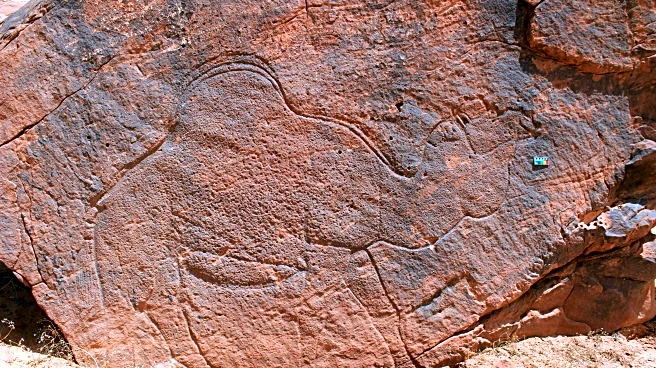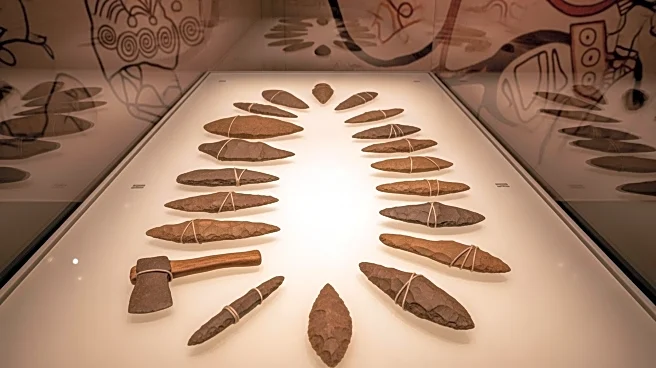What's Happening?
An international team of archaeologists has documented and analyzed monumental rock art in the Nefud desert of Saudi Arabia, revealing life-sized engravings of camels, ibex, and gazelles. These engravings, found in the Sahout region, date back to the early Neolithic period, over 12,000 years ago. This discovery challenges previous beliefs that northern Arabia was uninhabitable during this time due to extreme aridity. The engravings, which are difficult to date directly, were analyzed through associated archaeological finds such as stone tools and animal bones, suggesting they were created between 12,800 and 11,400 years ago. The art is believed to have served as territorial markers and symbols of water sources, reflecting the seasonal presence of early human groups in the region.
Why It's Important?
This discovery significantly alters the understanding of human habitation in northern Arabia, suggesting that human presence in the region predates previous estimates by thousands of years. The findings indicate that early Neolithic hunter-gatherers were more mobile and adaptable than previously thought, capable of surviving in harsh desert environments. This challenges the narrative of human settlement patterns and suggests a more complex interaction between early human groups across the Arabian Peninsula and the Levant. The engravings also highlight the cultural and symbolic importance of desert animals to these early societies, providing insights into their social and environmental adaptations.
What's Next?
Further research is likely to focus on uncovering more rock art sites and conducting detailed analyses of the engravings to better understand the cultural and environmental context of these early human groups. Archaeologists may also explore the connections between Arabian and Levantine populations, examining the extent of cultural and biological exchanges. This could lead to a reevaluation of the migration and settlement patterns of early humans in the region, potentially uncovering new insights into the development of human societies in arid environments.
Beyond the Headlines
The discovery of these engravings not only provides a glimpse into the lives of early human societies but also raises questions about the role of art in prehistoric cultures. The monumental scale and strategic placement of the engravings suggest a sophisticated understanding of symbolism and communication. This could indicate that early humans used art as a means of establishing social cohesion and territorial claims, reflecting complex social structures and interactions. The findings also underscore the importance of interdisciplinary research in archaeology, combining art analysis with environmental and technological studies to build a comprehensive picture of ancient human life.











